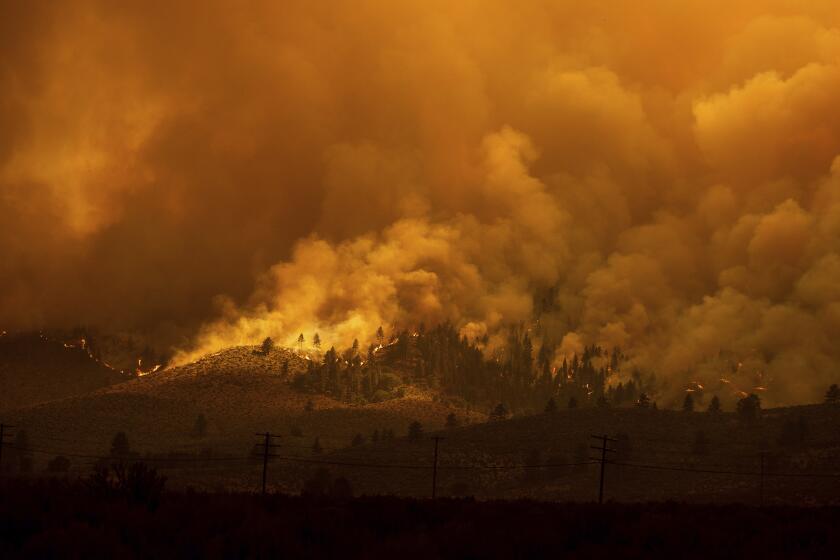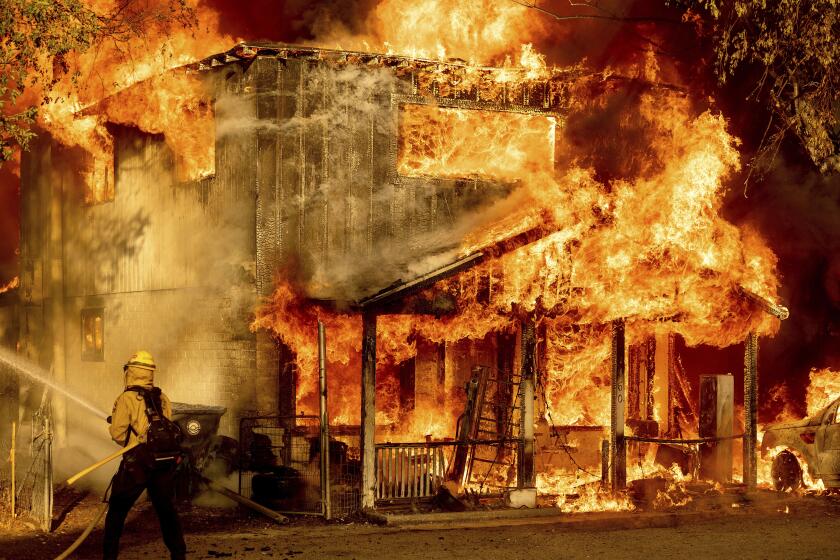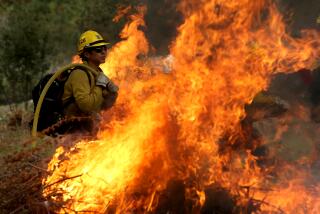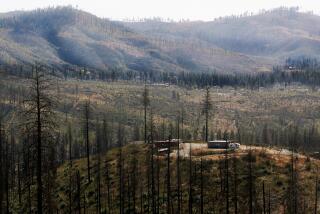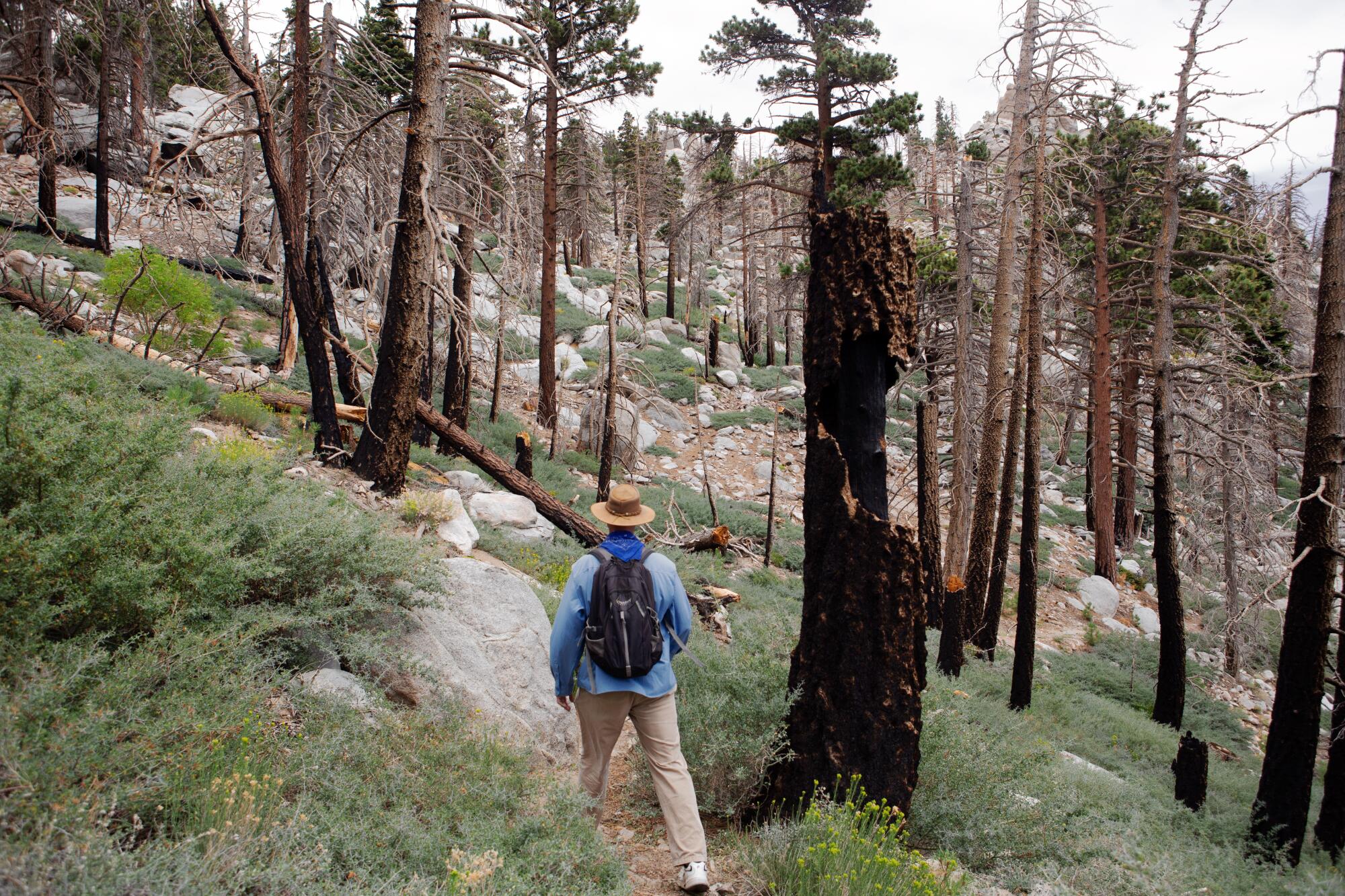
As he stood amid the rubble of the town of Greenville, Gov. Gavin Newsom this month vowed to take proactive steps to protect California’s residents from increasingly devastating wildfires.
“We recognize that we’ve got to do more in active forest management, vegetation management,” Newsom said, noting that the region’s extreme heat and drought are leading to “wildfire challenges the likes of which we’ve never seen in our history.”
Yet despite a universal desire to avoid more destruction, experts aren’t always in agreement about what should be done before a blaze ignites. Forest management has long been touted as essential to fighting wildfires, with one new set of studies led by the University of Wisconsin and the U.S. Forest Service concluding that there is strong scientific evidence to support the effectiveness of thinning dense forests and reducing fuels through prescribed burns.
Images of the Caldor fire and the Dixie fire, driven in part by warming temperatures and worsening drought.
But some ecologists say that logging, thinning and other tactics that may have worked in the past are no longer useful in an era of ever hotter, larger and more frequent wildfires.
“The fact is that forest management is not stopping weather- and climate-driven fires,” said Chad Hanson, a forest and fire ecologist and the president of the John Muir Project.
Many of California’s most devastating recent fires — including 2018’s deadly Camp fire and the Dixie fire, now the state’s second largest on record — seared straight through forests that had been treated for fuel reduction and fire prevention purposes, Hanson said.
But reimagining well-worn approaches to forest management will require a reckoning with what is and isn’t working amid the state’s shifting landscape. In lieu of focusing funds and resources on fuel treatment, Hanson and other ecologists have said the onus should shift toward home hardening and community protection.
“This is a climate change issue, and you can’t address it with chain saws and bulldozers or even drip torches,” Hanson said. “The only effective way to protect communities from wildland fire is to focus directly on homes.”
Though fuel reduction has been part of Cal Fire and the U.S. Forest Service’s practices for decades, former President Trump helped politicize it when he announced in 2018 that California’s devastating wildfires could be thwarted by better “raking” the forest floors.
The dryness of the vegetation, primed by both long-term drought and shorter-term heat waves, is making it easy for fires to ignite and even easier for them to spread.
Yet vegetation removal is only one among a handful of strategies that fall under the umbrella of forest management — not all of which were created equal, said Morgan Tingley, an associate professor of ecology and evolutionary biology at UCLA.
Tingley outlined three basic categories of work: prescribed burns, forest thinning and clear-cutting.
Prescribed burns, also known as controlled fires, are among the better solutions for maintaining forest health, he said. But given the restrictions, planning and logistics required for those types of burns, it’s impossible to utilize them to any real benefit.
The Forest Service this month vowed to stomp out every fire that ignites — a statement of political necessity that left many ecologists grimacing at the implications for the landscape.
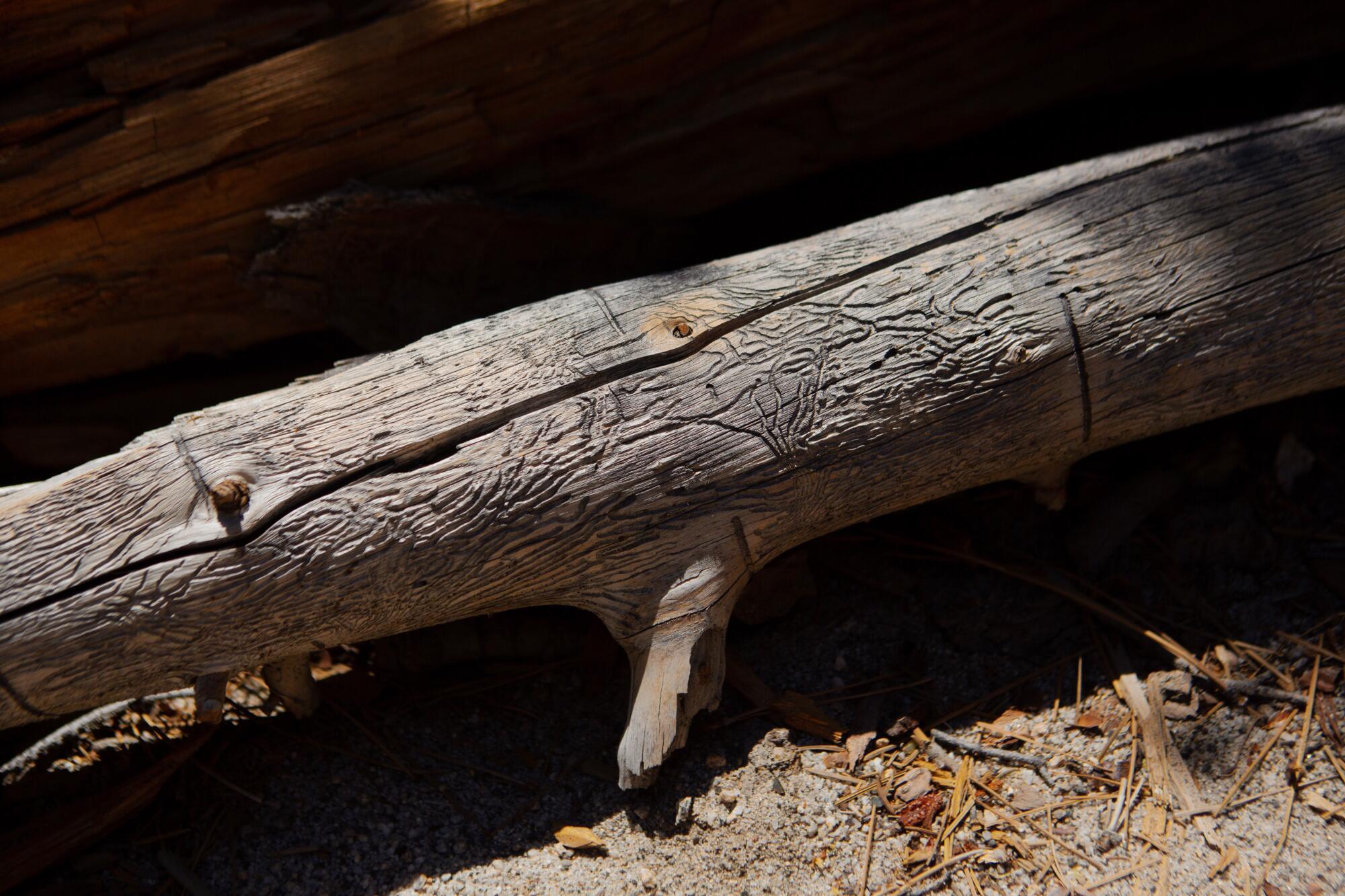
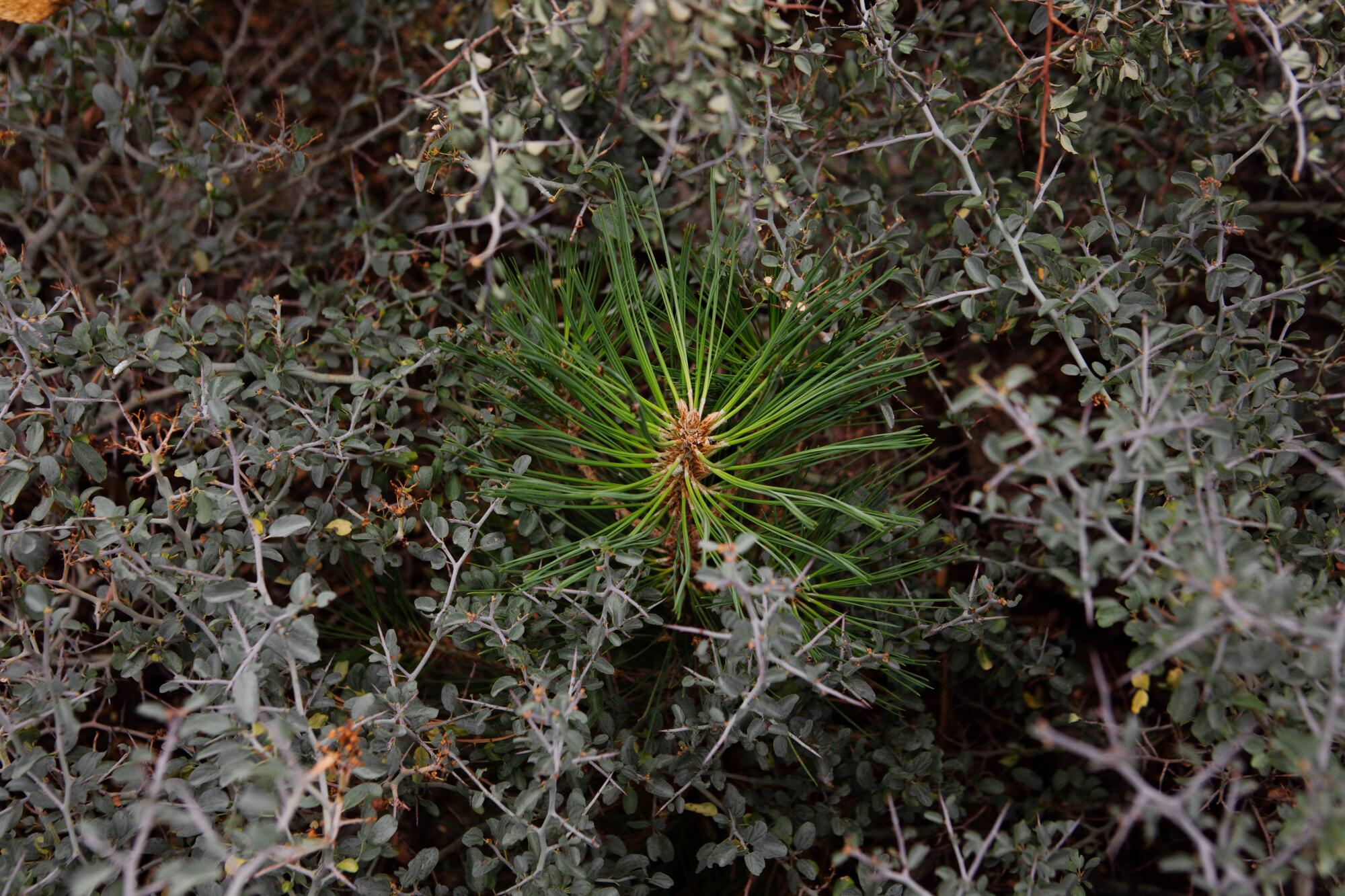
Even more controversial than prescribed burning is mechanical thinning, a vegetation reduction process that can involve chainsaws, masticators and other tools to clear out certain types of trees or densities of trees. While some ecologists believe that removing accumulated fuels can help limit the potential for catastrophic fires, others have argued that thinning can in fact make conflagrations worse.
One 2016 study published by the Ecological Society of America and coauthored by Hanson examined three decades of fire data across the western U.S., and found that protected forests — those that had not been thinned — had lower levels of burn severity despite having higher amounts of biomass and fuels.
A 2008 study published by Forest Ecology and Management similarly worked to combat misconceptions. It took a more tempered approach, noting that some forest thinning can be helpful, but also said that removing vegetation to reduce the size and frequency of wildfires is “both futile and counter-productive,” and warned that fuel reduction should not be viewed as a panacea for reducing fire hazards.
“Given the right conditions, wildlands will inevitably burn. It is a misconception to think that treating fuels can ‘fire-proof’ important areas,” the report said.
The U.S. Forest Service lets some blazes burn. California officials say that practices should be updated as blazes explode, partly because of climate change.
Among the primary concerns is that thinning a forest not only eliminates much of the forest’s carbon-sucking benefits, but also removes canopies that provide shade and help maintain moisture.
The 2018 Camp fire, which reduced much of the Butte County town of Paradise to ashes, burned in an area of forest that had been logged for fuel reduction and fire prevention purposes, Hanson said. When the wind-whipped fire reached the thinned-out, sun-baked forest, it flared up so quickly that it arrived in Paradise hours sooner than it otherwise would have.
The fire ultimately destroyed 19,000 structures and killed 86 people.
“It was going to reach the town no matter what, but it definitely burned more intensely and got there faster because of the logging,” Hanson said. “I think it would have meant the difference between life and death for most of those people.”
And it’s not just the Camp fire: A similar pattern can be seen in several other high profile fires, including the Dixie fire, the Caldor fire and the 413,000-acre Bootleg fire in Oregon, said Bryant Baker, conservation director for the Los Padres ForestWatch.
Maps of those fires fit almost squarely over maps of recently logged and treated forestlands, he said.
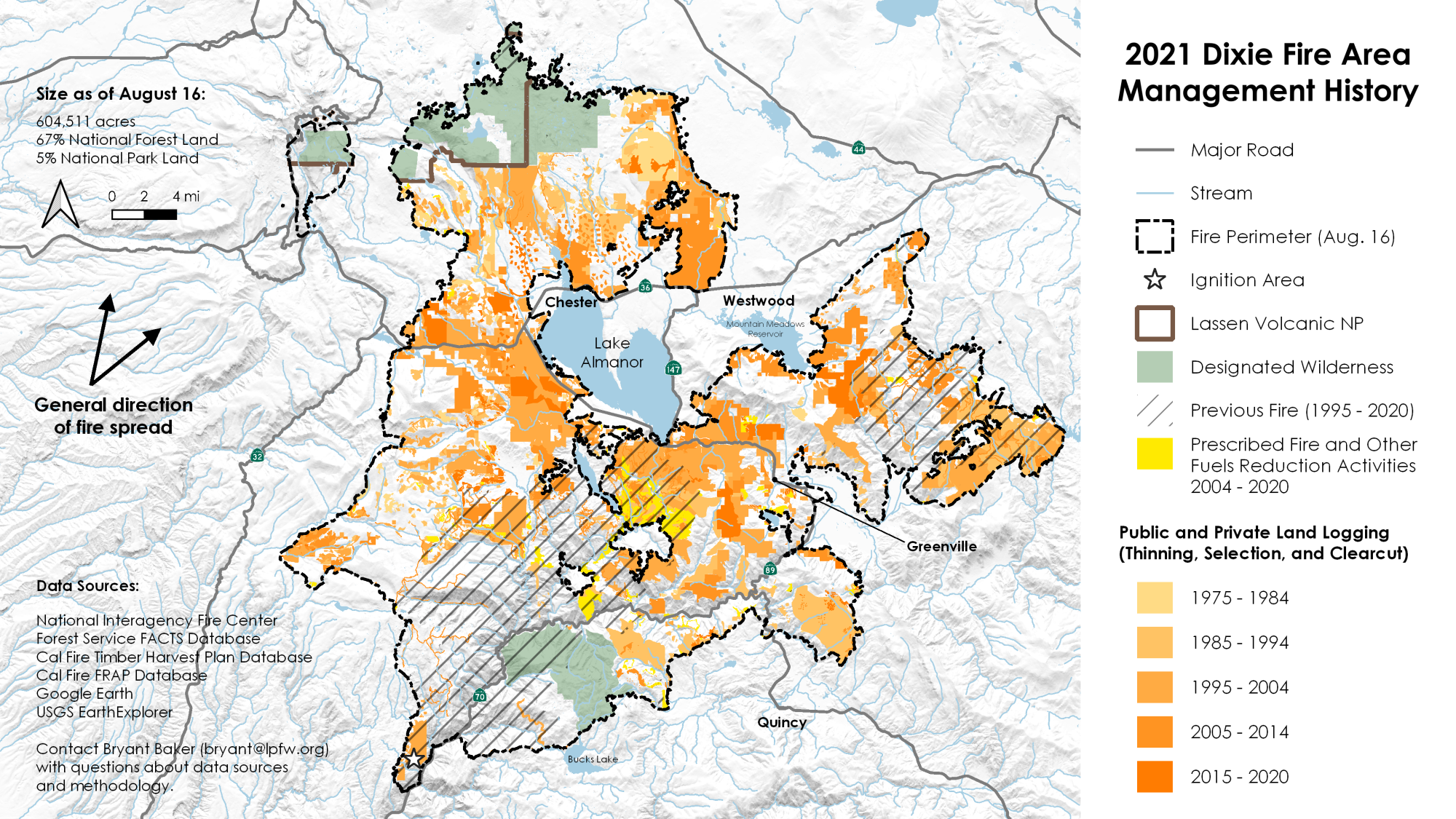
“We’ve heard a lot of folks in the Forest Service say that we need a paradigm shift in the way we deal with fire, and almost always, it’s a shift into the same paradigm we’ve been in: Keep suppressing fires, and double down on fuel treatment and cutting vegetation,” Baker said.
“What we’re actually talking about is a real paradigm shift. We really do have to rethink how we live with wildfire.”
One major element of that paradigm shift is home hardening and community defense, Baker said. That includes steps like reducing debris from gutters, retrofitting roofs and windows with ignition-resistant materials, and moving combustible items away from homes’ exteriors.
It also means improving early warning and evacuation systems within communities. If employed effectively, these strategies have been shown to protect more lives and homes during even very intense wildfires.
“It’s the one blanket approach that works,” he said.
More than a month after it ignited near a Pacific Gas and Electric Co. power station, the Dixie fire rages on
Yet even as crews struggle to gain a footing on the massive Dixie fire, Forest Service officials said the blaze is doing what it was intended to do, at least in part.
“From an ecological standpoint, [fuel treatment] is not really supposed to stop fire,” said Ryan Bauer, fuels and prescribed fire program manager for the Plumas National Forest. “The treatments are supposed to make the forest healthy enough to withstand fire.”
He pointed to successful fuel treatments around Meadow Valley, Butterfly Valley and Twain, where he said crews were able to hold the fire off from communities. He also said the Dixie fire has burned through a mix of treated and untreated land, as well as logged areas and burn scars.
“Certain areas of the forest are really well managed, and then other parts have almost no management history in the last several decades,” he said. “When the fire’s this big, it’s a mixed bag. It’s running over everything.”

Although the Forest Service had recently completed a large hazardous-fuels reduction project around Greenville that included prescribed fire, thinning and fuel breaks, Bauer said it simply wasn’t enough to make a difference — particularly once winds picked up and carried spot fires over the ridge and into the town, with a steep drainage right behind the community also contributing to the extreme fire behavior.
Another challenge is that many communities including Greenville are surrounded by a buffer of private land separating them from the national forest, resulting in a patchwork of owners who are sometimes unwilling to participate in treatment projects, he said.
But what happened in Greenville adds to multiple examples in years past of fuel breaks failing to guard towns against wind-driven fires, which can launch embers right over them.
“There’s no way to keep fire out of forests,” Bauer said. “If you do it then the fuels conditions just become worse and worse until you get a really bad fire on a really bad weather day and it burns then. All putting fire out does really is defer the risk to a future fire.”
Managers of the Plumas National Forest have known for several years that there was enough fuel on the landscape for it to be critical during any given summer when conditions are right, and it appears that time has arrived, he said.
“A year like this is the prime example of that, that year that we’ve deferred all of our risk into,” Bauer said. “It’s so dry this year that it doesn’t matter how much fuel is on the landscape. The fuel that’s there is going to burn. And we just have to hope that the trees on those landscapes are resilient enough to survive it.”
Already this year, there have been more than twice as many acres burned than during the same period last year — and hundreds more fires.
One thing most experts agree on is that clear-cutting — or logging all or most of the trees in an area — has almost no benefits to the forests or to their surrounding communities.
That the Forest Service remains in the timber sales business is something that has left some ecologists flummoxed, particularly since the federal agency is still required to meet annual quotas known as timber targets.
“Clear cutting is a purely economic choice,” said Tingley, of UCLA. “It is. There is no forest that is healthier if all the trees are cut down.”
When mechanical thinning or logging are done for profit — or when whoever is doing it gets to use the timber they’re taking out — that instead incentivizes removing the oldest, biggest and strongest trees, which fetch a higher price, and leaves behind the trees that are the least fire-resilient, he said.

In March, more than 300 scientists, stakeholders and community members signed a letter to Newsom asking him to reconsider his wildfire budget allocations for 2021 and 2022, noting that logging and clearance projects have “consistently failed to protect our neighborhoods from wildfire.”
The budget includes more than $1 billion to increase the pace and scale of forest management and fuel reduction projects, the governor’s office said. $100 million has been allocated to building disaster-resilient communities.
Rick Halsey, the California Chaparral Institute director who spearheaded the letter, said he is growing increasingly frustrated by the imbalance.
“There’s essentially nothing we can do on the landscape to stop these fires because the environment is conducive to them, so we have to sort of stare that in the face and acknowledge it,” Halsey said. “What can we do? We can protect communities.”
That means focusing on making homes less permeable to embers, reducing flammable materials within 100 feet of structures and preventing developers from placing neighborhoods in harm’s way, he said.
Hanson echoed the sentiment as he walked through the scar of a wildfire in the San Bernardino National Forest, pointing to dense vegetation and old-growth trees that withstood catching and spreading the flames.
If wildfire management could shift from a forest-focused approach to a homes-focused one, he said, more tragedies like those of Paradise and Greenville could be avoided.
“We don’t need to lose another community — and another community and another community — every fire season,” he said. “Once we start focusing on the right places, it’s going to be incredibly effective.”
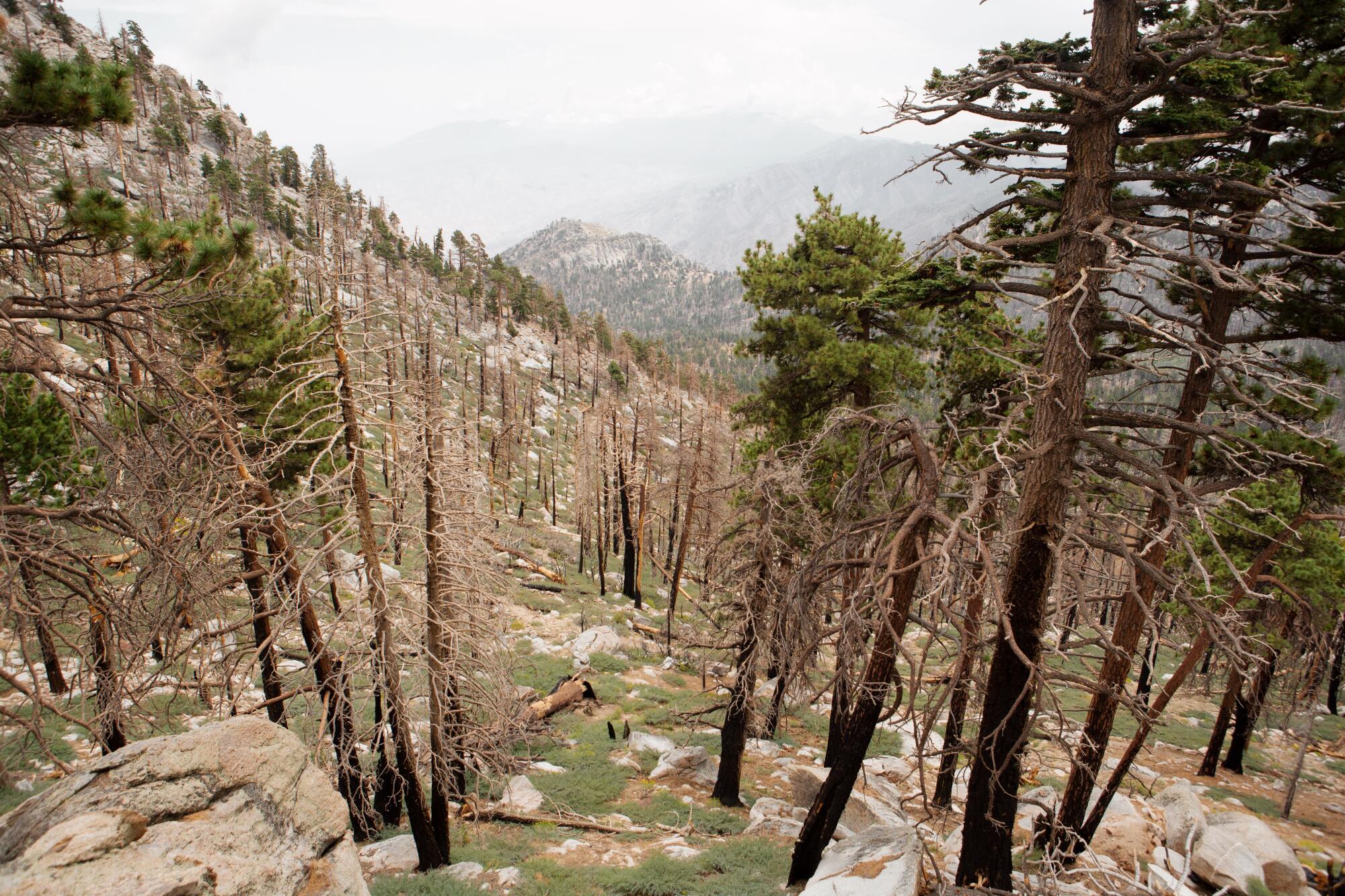
More to Read
Start your day right
Sign up for Essential California for news, features and recommendations from the L.A. Times and beyond in your inbox six days a week.
You may occasionally receive promotional content from the Los Angeles Times.

